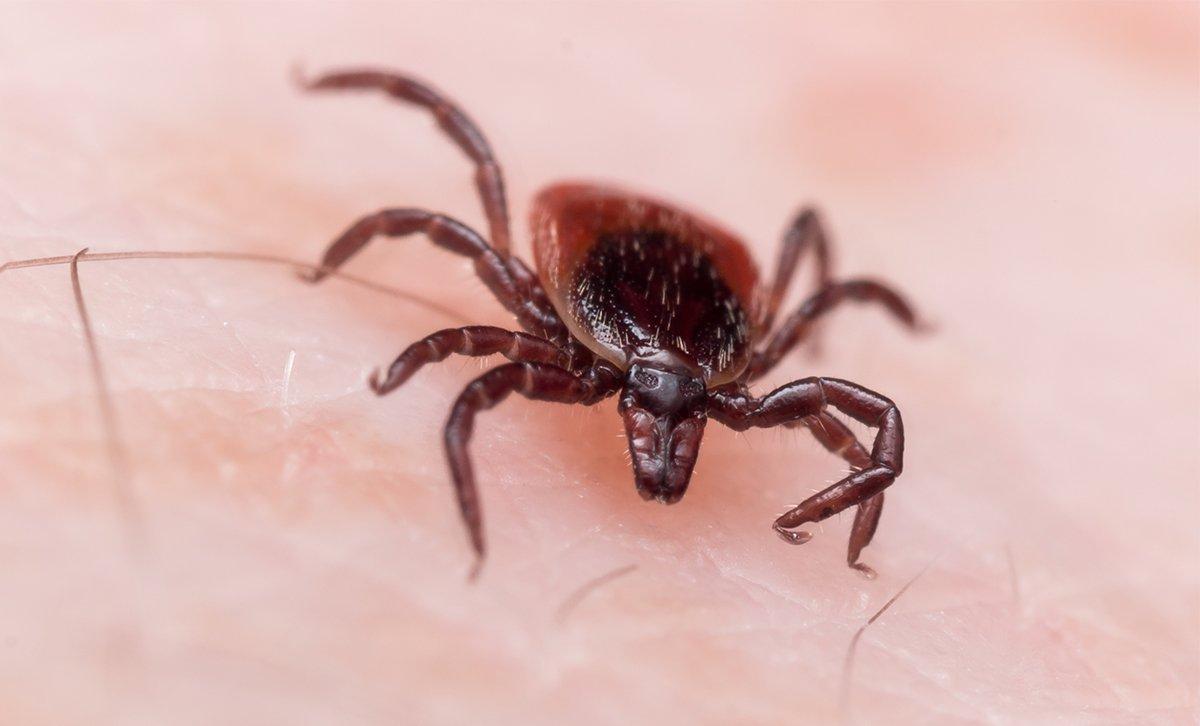Prevention, Diagnosis and Treatment
I don't want to scare you or discourage you, and I am certainly not trying to talk you out of going turkey hunting, but Lyme disease is serious business. The reported cases are increasing at an alarming rate, up from 4,000 in 1994 to over 30,000 a year in 48 states for the last five years.

The nature of turkey hunting puts the hunter in high-risk situations. Good information is your best protection from this insidious disease, so it is worthwhile to take another close look at the prevention, the symptoms and the treatments of the fastest-growing vector-borne disease in the United States.
Six Ounces of Prevention
Since you are spending a lot of time in tick-rich environments, try to make your skin unavailable and/or unappealing to the blood-sucking pests. I believe the most effective piece of anti-tick gear available is a 6-ounce spray can of permethrin-based repellant (follow manufacturer's directions when using any chemical repellants).
It not only repels, it kills whatever crawls on it! I treat several shirts and several pairs of pants with permethrin-based sprays at the beginning of the season, so I will have a fresh change of clothes when needed. When my clothes get funky, I wash and dry them, then treat them again. I also keep a spray can in my turkey vest and spray down my setup area if I plan to be there for a while.
Chemicals containing DEET mask the carbon dioxide ticks use to locate their warm-blooded hosts, so I spray all exposed skin with a DEET-based repellant. I tuck my pants inside of my boots, and run a strip of camo duct tape around the top of each boot to keep out any unwanted guests. I also do a thorough body inspection after each hunt. It is hard to cover all the bases every time, so you will get an occasional tick bite.
How to Remove Ticks
Do not squeeze, twist or burn a tick, or put any substance on it. Grasp it with pointed tweezers at the head end as close to your skin as possible and pull straight out, then apply antiseptic to the site. Early detection and removal is critical. The longer a tick stays attached to your skin the greater the chance of disease transmission. The species of ticks are too numerous to keep track of and identify as potential disease carriers, so I consider any tick that bites me as a potential carrier. I keep a sharp eye out for any symptoms.
Along with Lyme disease, ticks may also transmit Babesiosis, Bartonella, Ehrlichiosis, Rocky Mountain Spotted Fever and Tularemia.
The list sounds pretty scary but here again, good information is the best remedy for the potential health hazard a tick bite poses.
Recognize the Symptoms
It is critical for the turkey hunter to be aware of, and on the alert for, any hint of the most common Lyme disease symptoms. The first thing to look for is a red skin rash (called erythema chronicum migrans) that looks like the bull's-eye on a target. It occurs several days after the bite, usually appearing at the site of the bite. No rash doesn't necessarily mean no Lyme disease. Other first-stage symptoms include fever, abnormal fatigue, chills, headaches, stiff neck, muscle aches and pains, and possibly a distinct rash in areas other than the site of the bite. If you have the rash, you are more than likely infected, but less than 50 percent of those infected display the classic bull's-eye pattern. If you have had a recent tick bite and you are aware of any of the aforementioned symptoms, you should get yourself to a doctor immediately since Lyme disease is highly treatable in the early stages.
Personal Experience
My personal experience with Lyme disease began in the early 1990s, before much was known about it. I live and hunt in and around the Land Between the Lakes Wildlife Management Area in Tennessee and Kentucky. This area, in my estimation, is world headquarters for ticks.
In fact, the army used the area for tick research while they perfected a scent-free insecticidal treatment for clothing that would bond to fabric (permethrin). They had to collect a bunch of ticks for their research, so they put dry ice (dry ice is frozen carbon dioxide, the gas you emit through your pores that attracts ticks) in burlap bags and drug them through the woods to collect their specimens.
I would like to say after dragging the bags a couple hundred yards, they would be so weighed down with ticks one man couldn't pull the weight, but no one would believe me. Needless to say, I got a lot of tick bites while hunting in those infested areas. In the space of two years, I was treated for Lyme disease on three separate occasions. Each episode began with a tick bite and a bull's-eye rash and was successfully treated with a 30-day regimen of doxycycline tablets by my family doctor who was familiar with the disease and believed in early treatment.
Early diagnosis, which is critical in the effective treatment of Lyme disease, is readily available these days since fairly reliable diagnostic blood and urine tests are available at many medical facilities. You can even send in the guilty tick and have it tested (Google tick test Lyme disease) for the bacteria if you have the presence of mind to save the tick.
If you can get an accurate diagnosis soon enough after the initial infection, a three- to four-week course of oral antibiotics (pills) such as doxycycline, or amoxicillin can effectively purge the Lyme bacteria from your system but . . . If the disease has gone undiagnosed for an extended period of time (months or even years) it may require treatment with intravenous ceftriaxone or penicillin" for four weeks or more.
Be Warned
Lyme disease is nowhere near epidemic proportions yet, but the threat is out there and, like the weather, we have to deal with it. As long as we maintain a working knowledge of prevention and an acute awareness of Lyme disease symptoms, vigilance is a small price to pay for the opportunity to participate in the grand sport of turkey hunting.
Go here for more Realtree turkey hunting. Follow us on Facebook.
Editor's note: This Realtree.com feature article was first published May 22, 2017.









































